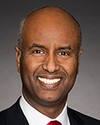Thank you for welcoming me to the committee.
We know that there have been incidents in Poland and Romania. In Denmark, drones have been spotted on at least two nights. Reportedly, the perpetrator is an unknown professional operative. Denmark hasn't ruled out the possibility that Russia lies behind the attack. The prime minister called it the most serious attack on critical infrastructure in the country. She also said that it was part of a recent trend of drone attacks, airspace violations and cyberattacks against European airports.
Denmark is obviously a strategic target because it's a founding member of NATO and a gateway to western Europe from the north. First, do you think that the drones were Russian? Can we draw a connection between this incident and the other incidents currently being discussed? Second, do you think that Denmark is being directly targeted, or that NATO is being indirectly targeted?




